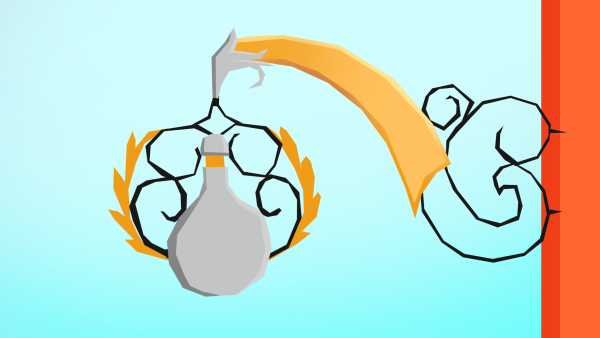A plague can be a major attribute of a historical era. When worldbuilding, you can implement plagues to heavily affect all aspects of your societies. So, what should you keep in mind when worldbuilding pandemics?
Technically, the word “plague” in the real world refers to a contagious disease, usually specifically the bubonic plague. However, in this article, I am using the word as synonymous with “epidemic”, and to a certain extent “pandemic” – as a disease that is prevalent in a given community or country during a certain time. I’ve made this choice because the word “plague” is often used this way in fantasy writing, and has been used that way in the real world in the past.
In this article, I will go over some points on why and how you should include such diseases in your worldbuilding, what environment they need to happen, and how they affect society and nature. As usual, at the end, I give a few examples from the real world, as well as one example from my fantasy world, Eledris, to give you someplace to get inspiration from when worldbuilding.
Uses of plagues in worldbuilding
Before we start creating the plagues themselves, let’s think about what they can achieve in your worldbuilding. A widespread disease can massively change the environment of a culture, impact religion, the economy, as well as social values; we’ll dive into that more later. You can use a plague to provide an interesting setting for a story and to drive a society into its next stage.
Furthermore, if your world has multiple intelligent species (full guide on creating those here), you can highlight their biological and societal differences with the disease affecting each race differently. That can add a lot of nuance and option for conflict in your world – for example, if a plague affects one species significantly more, another culture might take that opportunity to attack them while they’re in a weakened state.
Finally, the epidemic can provide some options to develop your individual characters’ values and traits in your writing. Different characters might react in varying ways to government regulations as well as mass information spread about the diseases. The plague can also provide you with an option to kill off people important to your characters and thus provide tragedy into their lives when you need that in your writing.
Requirements for plagues
Now that you’ve thought about what you can achieve by implementing a plague into your world, it’s important to consider the environment a plague needs to happen. This section is heavily adapted from CGP Grey’s video “Americapox: The Missing Plague“, so definitely check that out if you prefer the video format – and if you’re familiar with it, feel free to skip to the next section of the article.
There are several requirements your environment needs to be able to properly develop diseases that spread quickly, and, often, kill quickly. First off, domesticated animals. Plagues happen via diseases jumping from animals to humans (or other intelligent species). However, that happens extremely rarely, so the species needs to spend a lot of time around a lot of animals to increase the odds. Domesticated animals provide a plethora of opportunities for contact.
Secondly, cities. Not only do large settlements provide more contact with animals, if the culture keeps their animals on the streets and in houses, but cities also allow a plague to sweep through a large population quickly, while still being supplied new and new hosts as more people move into the towns. A society building large cities also probably means they have technology developed enough to build large travel networks, comprised of roads, rivers, canals, and maybe even railways. These quick and heavily-used methods of transport allow the plague to spread from one community to the next.
Thirdly, poor hygiene standards. In order for diseases to spread effectively over a community, the hygiene must be sub-standard. If a culture you developed washes their hands, does a good job of separating drinking water from waste water, and keeps messy animals away from living areas, their chances of starting a plague are significantly reduced.
The impacts of a plague
There are plenty impacts a pandemic will have on a society while its happening. One of the obvious effects is the decrease in population. A significant decrease in the number of people alive in a country will have significance in the economy (more on that in a second). It will also lead to geographical changes in nature – for example, reforestation when there’s not enough people to require forests being cut down for wood and agriculture space. You can also use the plague as a plot device in your writing, killing or temporarily incapacitating significant characters such as heirs to the throne, generals, etc.
Generally speaking, the lower classes tend to be affected by plagues more, because of their living conditions – living with more people in close proximity, with lower sanitation standards, as well as having a worse access to healthcare. However, a great population recline might cause prices of property and products to drop and wages to increase; a lower number of workers means that employers will have to offer more competitive pay. The plague will also inevitably create job postings in healthcare and disposing of the dead.
Depending on the scale of the plague, there will be significant impacts on the values in a given culture. Wide-spread death can influence the people to value their religion more, giving less impact on their earthly lives and more emphasis on the promised afterlife. On the other hand, some sub-cultures might blame specific people and groups for the tragedies around them – these groups can then be subject to bigotry and attacks.
With the culture’s values changing, art and literature are bound to change as well. The general atmosphere might become more pessimistic, personifications of death and disease might change throughout art to represent the characteristics of the plague more, and the subjects might include ravaged villages and towns, sick patients, or more metaphoric representations of the ongoing tragedy.
Depending on the culture’s healthcare levels, quarantines, shutdowns, and lockdowns can affect both the economy and areas such as education. Public gathering spaces might also be closed off, leading to a general decrease in the quality of people’s mental health. Travel restrictions might affect international trade and the tourism industry.
The aftermath of a plague
Even after the majority of the plague has gone away, either from a large part of the population (that didn’t die) developing immunity or because of healthcare improvements and breakthroughs, it will have a lasting impact on the society’s economy and values.
Long-term labour shortages can lead to revolts in lower classes and lockdowns can lead to surges in poverty and long-term reduced global trade.
A large population decline can also have positive effects on some social issues. For example, the shortage of male workers could lead to more women entering the workforce.
In art and literature, the end of a plague can lead to varying results – the overall atmosphere might be positive, celebrating the end of the horrors, or one of mourning.
Real-world examples
Let’s look at a few real-world examples to illustrate to impacts a pandemic can have on a society. In this section, I am going to be sourcing a large part of my information from a 2021 article “Societal Impacts of Pandemics: Comparing COVID-19 With History to Focus Our Response” by Grace E. Patterson et al.
You can use these, and other real-life plagues to inspire your worldbuilding. Remember to take into account the differences between the environment of Earth and your specific world and change details accordingly.
The Black Death
The Black Death was a major pandemic of the bubonic plague throughout Europe, Asia, and North Africa during 8 years of the 14th century. Its large mortality rate resulted in a large portion of the continents’ population dying (estimated to have killed 30-60% of the European population at the time). It was particularly augmented by the close proximity people were living in in cities and the poor hygiene standards, both with disposing waste and with living close to animals. Let’s consider some of its consequences.
The plague brought forward some quarantines by city-states, preventing strangers from entering the city walls. However, these restrictions were limited and often targeted at specific groups, such as Jewish people.
The massive population decline lead to labour shortages, in turn leading to increased wages, an uptick in laws attempting to subdue the lower classes (for example by forbidding people to change jobs), and peasant revolts. Worker mobility also had to increase, as people needed to travel for jobs more. Women and younger sons also benefited, often inheriting property from the deceased.
Art and literature changed to be more pessimistic, often depicting themes around death and earthly suffering. Finally, in religion, the shortage of experienced priests lead to undertrained clergy members assuming roles of high power in monasteries (which were hit particularly hard because of the sick seeking refuge there).
Smallpox in the New World
The smallpox epidemic of the 1520s is a great example of how a plague can affect varying populations differently. It was introduced to Central and South America by the European soldiers/explorers, and killed several million people of the native population. A major factor of the spread was the fact that the native people did not experience previous exposure to similar diseases. Furthermore, some of the Native American cultures had customs of sleeping in close range to sick individuals.
The outbreak caused a major power balance shift in the New World, slaughtering the majority of the population and allowing the colonial powers to take over the continent with more ease. This conquest in turn contributed heavily to the imperial status of some European countries, as it allowed them to mine the new continent’s natural resources and riches.
Spanish flu
The influenza pandemic of 1918, commonly known as the Spanish flu, provides several interesting insights you can use when worldbuilding plagues. The disease spread around the end of the first World War, ending up killing an estimate of 17 – 50 million people. Its spread was hastened by the close living quarters and troop movements during the war. Besides that, the stress of combat, malnourishment, and chemical attacks might have also contributed to the people’s susceptibility to the disease.
It’s interesting to note the misnomer “Spanish flu”; during the war, many countries censored negative news in reporting to maintain a high morale. The Spanish government did not implement censorship of news about the disease, leading to a false impression of Spain as the epicentre of the pandemic. It is unclear where this plague actually originated. The aforementioned censorship sometimes lead to inadvertent distrust in public institutions in the common people.
Because germ theory was already fairly widespread during the 20th century, many countries implemented restrictions such as masks, social distancing, tracking of the infection, and limitations on public gatherings. However, a large portions of these regulations were introduced too late, weren’t enforced enough, and suffered from poor record-keeping, leading to their limited effectivity.
The economic impact of the Spanish flu is difficult to determine because of it being obscured by the World War. However, the war, followed closely by the plague, lead to a large decline in population of young and middle-aged men, causing a labour shortage. Schools and public spaces were also often closed down during the outbreaks.
Covid-19
The ongoing Covid-19 pandemic, starting in 2020, is a notable example of how a plague can impact modern cultures. Besides the obvious impacts on global population, the pandemic had a large effect on the global economy, as well as the education of many children. Furthermore, it highlights social inequalities such as poverty. It also decreased the general level of mental health in people due to the constant news coverage, lockdowns, and conflicts arising from the pandemic. Lastly, it might have worsened international conflicts and highlighted the infectivity of global cooperation.
The Serene Plague of Eledris
To finish this article up, I’d like to share an example of a plague from my fantasy world, Eledris. The Serene Plague was a 6-year pandemic mainly affecting the kingdom of Carran. It took the lives of around 200 000 people, including a large section of the Royal Family, leading to a period of heavy political unrest right after the plague ended. The origins of the plague are disputed, some blaming magic users dabbling in the newly-researched Familiar school of magic, while others pinning the origins as Demonic in nature, caused by several of the larger invasions the years prior.
The disease in question causes strong fevers and, in many cases, causing pain to the patient when speaking (this is where the name for the plague comes from). The government at the time attempted to quarantine the cities with initial outbreaks, learning from their mistakes in the Oakenfever Epidemic around 20 years before this plague, but the quarantines were often breached, or implemented too late and ineffective.
This pandemic also lead to a low-point in the alliance between the Elves and Carran, as the Elves severed most ties with the humans as soon as the plague started, in a mostly-successful attempt at self-preservation. That choice later lead to prejudices against the Elves in the human kingdom for decades to come, with some political figures even suggesting attacking the Elves a few years after the plague ended.
Conclusion
To quickly summarize: a plague can be useful to your worldbuilding as a major attribute for a given historical period. When worldbuilding plagues, keep in mind that besides the population decline, it will have large impacts on society, including effects on the economy, religion, art, and general cultural values.
If you’ve enjoyed this article, consider subscribing to the newsletter to get updated when I release new worldbuilding posts or update the old ones. Feel free to send me your comments, insights, or examples of pandemics in your worldbuilding over at tadeas@eledris.com, I’d love to hear your inputs!


